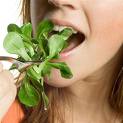
Tis the seasons for racing...at least in our part of the country it is! Mountain biking, triathlons, marathons...there are some pretty hardcore athletes out there! But, how do you know if you are properly fueling your body to perform optimally, when you need it the most?
Well, here are a few tips of what to eat before, during and after a race:
Before - most everyone is familiar with the typical "carb loading" dinner that many athletes will indulge in the night before a race...but, there's "carb loading", then there's "Carb loading"...what's the difference?? Most people will fuel up on refined pasta, with refined bread and salad with high fat dressing the night before a race; it's understood that the body needs to increase the glycogen in the muscles (which is done through eating carbs), but with all that refined food, you're really just putting stress on the digestive tract. I don't know anyone who wants to race with sluggish feeling bowels!
You are better off eating a well balanced diet all week long (if your diet consists of 50% carbs throughout the week, that is enough to build up glycogen stores), just make sure you include whole grains and lean protein.
The morning of the race, keep your meal light and include lots of water. Try to make it about 70% carbs (remember, whole grains here!), 15%protein and 15% fats...and you want to consume this meal 2-4 hours before your race. And also, try to avoid foods that contain a lot of fibre and dairy, as these can cause stomach cramps.
During - most people will just opt for energy bars or gels for during a race, with a pack of gatorade/water mix to keep them hydrated. While it's fine to go this route, remember to test these products before the big day, to make sure that your body doesn't have any adverse reactions to them (highly recommended since a friend related a story about Cliff bars having a bad effect on her digestive system during an endurance race through the desert...enough said!).
But, you can also opt for "real food" during your race. Things such as a banana; a bagel with natural peanut butter; steamed, salted potato slices or good old trail mix (with almonds, seeds, raisins and dates) can be just as satisfying (and are made from whole foods, instead of processed chemicals). And make it easier on yourself by packing these items in small serving sizes for easy eating.
After - it is also really important to refuel within 30 minutes after your race. Bananas, whole grain crackers and yogurt are all good foods to start with. Then, you'll want to be sure to have a meal that is a good combination of protein and carbohydrates afterwards (some athletes swear by a steak and potatoes for getting the body to feel good again). Whatever you choose, just remember to drink, drink, drink!!!
Enjoy the race!!
In good health,
Wendy







